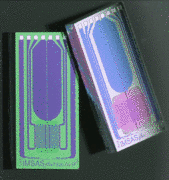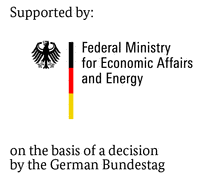Energy savings in refrigerated storage rooms using airflow sensors from the University of Bremen
Start of new project in July 2015
Having fresh fruits at any time of the year entails some extra costs. Apples, for example, are stored for up to 6 months in refrigerated storage rooms. A new project, started in July 2015, strives to reduce the required energy. Electrical energy is not only required for the cooling compressors, but also for ventilators to sustain a permanent air flow surrounding the fruit boxes. About 40% of the total energy is required for ventilation.
Sufficient air flow and cooling has to be guaranteed for any box in the warehouse. In the past this was often achieved by the usage of oversized ventilation units. The German Federal Ministry for Economic Affairs and Energy supports a new approach which aims at reducing ventilation speed by intelligent control based on the actual air speed measured at multiple points in the warehouse. If the air flow is sufficient, the power of the ventilator for this section is reduced. In case of cooling problems, the revolution speed is increased.
Lower revolution speed brings a double saving: lower speed results in less thermal waste energy of the fans to be removed from the warehouse; and, fruits lose less moisture due to reduction in evaporation.
The design of fruit storage boxes will also be optimized. Accurate measurements of air flow conditions inside the boxes provide the necessary information. Additional baffle plates under the ceiling will lead the air flow where it is mostly required.
Experienced biologists from the Leibniz Institute for Agricultural Engineering Potsdam-Bornim, Germany will lead the project, evaluate the effects of deviated air flow conditions on the fruits, optimize fruit packing, and apply computational air flow models.
Miniaturized air flow sensors will be manufactured using clean room technology, which for 10 years has been a key competence of the IMSAS Institute at the University of Bremen, Germany. A new chip design will enable air flow measurement in different directions including total speed and angle, thus enabling more accurate analysis of air flow profiles. Between 20 and 100 sensors will be applied during the field tests. Applying such a high number of sensors is only feasible with wireless communication. A new low-power communication module will be developed by microsensys in Erfurt, Germany. Another research partner and total 5 industrial companies take part in the project over a duration of 2 ½ years.
![]() Press release published by
Press release published by ![]() Leibniz-Institut für Agrartechnik Potsdam-Bornim e.V. (21.7.2015, German only)
Leibniz-Institut für Agrartechnik Potsdam-Bornim e.V. (21.7.2015, German only)










